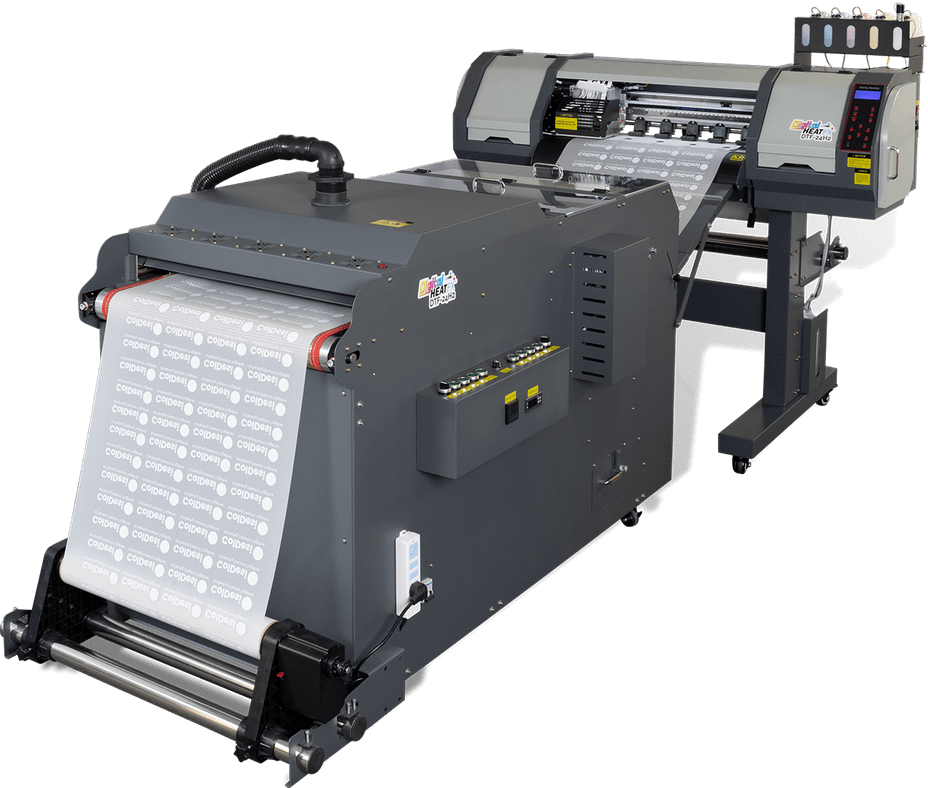Using the Power of DTF Printing: Strategies for High-Quality Textile Layouts
Wiki Article
Ultimate Overview to DTF Printing Techniques for Spectacular Textile Styles
Starting the journey of mastering DTF printing methods can open up a globe of possibilities for creating visually fascinating textile designs. As the fabric industry continues to evolve, staying ahead of the curve with innovative printing methods is crucial. In this overview, we will check out the intricate details of DTF printing, from realizing the basic essentials to unraveling progressed color techniques that can raise your styles to new heights. Remain tuned as we dig right into the subtleties of selecting the appropriate products, developing the printing procedure, and getting over usual challenges to accomplish spectacular outcomes.Understanding DTF Printing Fundamentals
DTF printing, a process that entails moving designs from an unique movie to textiles using warm and stress, develops the structure of textile printing techniques. The very first action in DTF printing involves developing or selecting a layout that will be published onto the textile.The last outcome is a stunning, durable textile design that is washable, flexible, and resistant to fading. On the whole, comprehending the fundamentals of DTF printing is vital for mastering this modern textile printing strategy.
Choosing the Right Fabric Products
Having established the foundational principles of DTF printing methods for textile designs, the following important consideration hinges on selecting the suitable textile products to match this cutting-edge process effectively. The success of a DTF print largely relies on the compatibility in between the selected material and the printing technique. When picking fabric products for DTF printing, it is important to consider the fabric's structure, weave, and structure. Fabrics that work well with DTF printing include polyester blends, spandex, nylon, and other synthetic materials. These textiles typically have a smooth surface area that enables detailed and lively prints. In addition, the stretchability of these materials can accommodate the heat transfer process associated with DTF printing without distorting the design. It is a good idea to avoid all-natural fibers such as cotton or silk, as they might not yield the very same level of print quality and longevity. By choosing the right textile materials, developers can make the most of the possibility of DTF printing to produce resilient and spectacular fabric layouts.
Grasping the Printing Refine
To excel in DTF printing techniques for textile layouts, mastering the printing procedure is important for attaining regular and high-grade results. The temperature, pressure, and duration of warmth application must be thoroughly controlled to make certain proper attachment of the design to the fabric. By refining each of these steps in the printing procedure, developers can regularly generate magnificent and sturdy textile layouts with DTF printing strategies.
Enhancing Styles With Color Strategies

Furthermore, experimenting with color gradients can bring a feeling of activity and fluidness to the style. By blending shades effortlessly, navigate here a slope impact can be attained, including a modern-day and vibrant touch to the fabric layout. In addition, making use of shade blocking techniques can create vibrant and striking visuals by juxtaposing different solid shades in distinctive sections of the layout.
Additionally, including metallic or neon colors can give a special and eye-catching element to the fabric style, making it stick out and exude a feeling of vibrancy. When tactically applied, these shade strategies can raise the general aesthetic appeal of textile styles, making them extra remarkable and fascinating.
Troubleshooting Common DTF Printing Issues
After exploring various shade strategies to improve fabric styles, it is important to resolve typical DTF printing issues that might arise throughout the production procedure. One typical issue is bad adhesion, which can result from inappropriate treating temperature levels or times. To resolve this issue, make sure that the treating settings are exact and that the sticky made use of is ideal for the specific material being published on. One more constant challenge is shade disparities, where shades may appear read this post here in different ways than expected. This can be created by inaccurate shade accounts or settings in the printing software application. To tackle this, double-check the shade settings and profiles to ensure they match the desired design. Furthermore, issues with picture quality and sharpness can occur because of low-resolution photos or improper printing methods. To resolve this, constantly make use of premium photos and readjust the printing settings for optimal clearness. By recognizing these usual problems and implementing the needed troubleshooting actions, you can boost the total top quality of your DTF published textile styles.Verdict
In conclusion, mastering DTF printing methods is important for developing spectacular fabric styles. With technique and interest to information, one can create attractive and special textile layouts using DTF printing methods. )))))DTF printing, a process that includes transferring styles from an unique film to textiles making use of warm and stress, forms the foundation of fabric printing strategies.Having actually established the foundational concepts of DTF printing strategies for textile styles, the following critical consideration exists in selecting the ideal textile materials to complement this ingenious procedure effectively. By selecting the ideal textile materials, developers can optimize the possibility of DTF printing to visit this site create spectacular and long-lasting fabric layouts.
To succeed in DTF printing techniques for textile designs, understanding the printing procedure is important for accomplishing constant and high-grade results. DTF Printing. By developing each of these steps in the printing process, designers can regularly create sensational and long lasting fabric layouts with DTF printing strategies
Report this wiki page